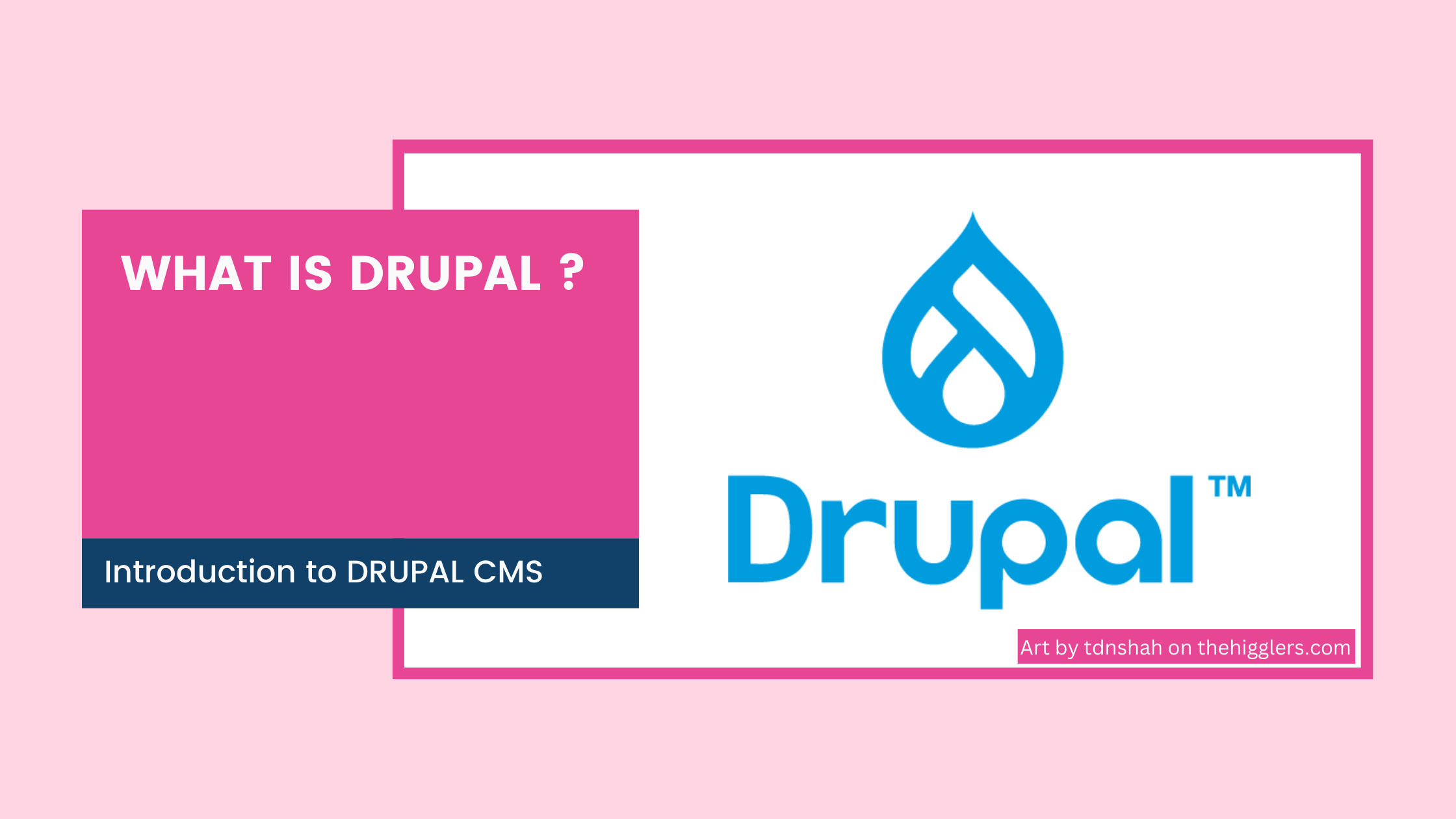What is drupal?
Authored By :
Published On
Sunday, Apr 9, 2023

Drupal is an open source content management system developed on php language and mysql database. It is widely used by large organisations as a their Digital Exprience Platform (DXP). Drupal out of the box comes with a lot of content management abilities like
1. User Management with a custimisable RBAC (Role Based Access Control): Drupal comes with an highly customisable user management system which can help you create dyanmic websites providing role based access control to the users. With this kind of user management system access to the different parts & features of the website can be controlled to a granular level.
This is a best fit but not limited to websites run by large enterprise scale Media houses, Insurance companies, Education Institutes & Universities.
2. Customisable content types system: Drupal also comes with a composable content architecture where in you can create different kind of content with a set of fields like Text, Body, Date, Taxonomy, Related contents (Entity reference fields) attached to a particular instance, hence this is the only CMS that do not defines how your content should look like, it gives the freedom to the user to create there own content types like Blogs, Page, Contact-form, Books, Movies, User profile’s etc with each one have its own set of fields and yes theorictially there is not limit to how many content types you can create but freedom always comes with responsibility hence there can be a practical limit on how may content types should be created to run your website in optimised manner.
Drupal content management system also comes with a entity relation fields which helpes you relate one content from with another content form which can be done using a entity reference field.
3. Media management: Drupal also comes with a media library for managing all kind of static assets like images & files and there are Drupal Profiles where in Drupal is modelled as a DAM (Digital Asset Management) Tool as well and this is possible just because of its Media Library Capablities.
Drupal comes with an media field which can be used to attach the media library to content types so that user can add files and images to the content using a Media field. Another best part of this field is you can define which formats should be supported, what is the maximum file size should and should it be a public or a private file.
Secondly using contrib module this media library can be extended to use CDN’s and files storages like AWS S3 Buckets etc with Drupal.
Hence in all Drupal does comes with a full fledge media management system out of the box.
4. Content moderation system: For any content management system a must have is the content moderation and workflow feature so that the content goes through a review process before its published and made live to public. And Drupal does have it out of the box and this is also totally configurable so users can define their own workflow as per their needs and this can then be attached to different content types so you have the freedom to have multiworkflows based on the department, teams, or content.
5. Layout builder and blocks system: In the era of drag and drop ui builders, it is vital to have a drag and drop page building capabilties in CMS now a days and it is considered one of the major factor while ranking CMS’s and how can drupal be behind in this race, Drupal also shops with a layout building capability which is also highly configurable to have layouts at content types level or at an each content level (i.e You can have a different layout for each page on the page content type which is usaully needed for creating landing pages.)
Hence Drupal does scores good when it comes to having a page building capability.
6. Views - A UI based query builder: Drupal comes with a very unique feature named views which as far as I know I havent yet seen any other CMS has something similar or even nearby to what views has to offer.
Views is a visual query builder hence using views you can query the content from the Drupal DB and show it in mutliple form like page, blocks, attachments, etc.
Views also gives you an option to create exposed filters and even contextual filters (i.e url or other context based filters.)
I must say with views sky is the limit to query data and create displays.
Conclusion: Hence, this feature of content archtecting helps in creating a wide variety of application using Drupal hence not restricting its usage only to creating a personal blogging website indeed you can create a wide variety of software application using Drupal outof the box and hence it is mostly also termed as Content Management Framework. Drupal in its core is designed and architured in such a way that it can perfect be called as a low code platform which recently is a kind of BUZZ word in the industry.
Please give us your feedback on our articles and if you find them helpful, click the thumbs up icon to motivate us to write more.